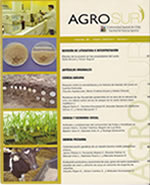The role and applications of fungal enzymes that degrade agricultural wastes
Main Article Content
Abstract
Agricultural waste is an excellent source of renewable organic matter and its main compound is lignocellulose which is made up of lignin, pectin, cellulose and hemicelluloses. Xylan is the main component of hemicelluloses and is the second most abundant natural renewable polysaccharide available on earth. It is a complex heteropolysaccharide formed by different monosaccharides such as D-xylose, L-arabinose, D-galactose, D-mannose and organic acids such as acetic acid, ferulic acid, glucuronic acid interlinked with the help of ester and glycosidic bonds. Xylan biodegradation is a complex process that requires the participation of a series of esterases and glycosyl hydrolases. The suitability of glycosyl hydrolases for applications in paper and pulp, feed, and biorefinery has led to increasing demand for these enzymes worldwide. The present review provides an insight into the biochemistry and use of fungal glycosyl hydrolases in the industry as an emerging ecological tool.

